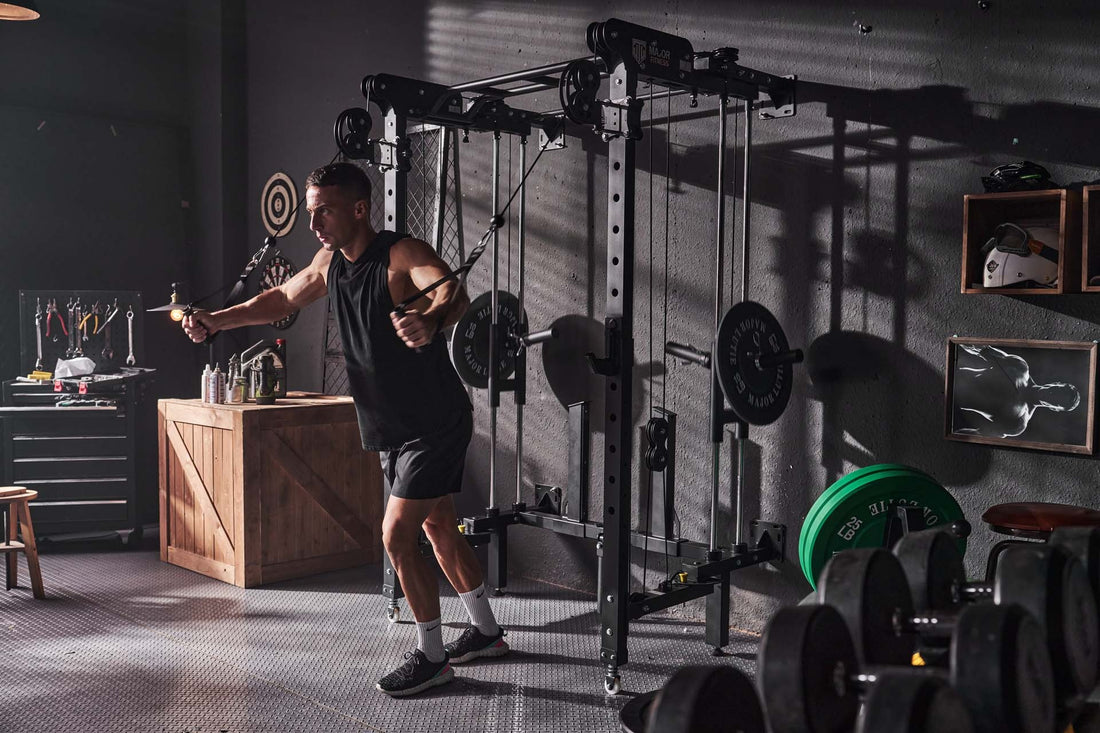
When it comes to sculpting your physique and achieving peak athletic performance, the debate of calisthenics body vs bodybuilder has been a longstanding one. Both of these training regimes offer unique benefits and cater to different fitness goals. But which approach aligns best with your fitness aspirations? Let's delve into the specifics and examine the key differences, benefits, and methodologies of calisthenics and bodybuilding.
What Defines a Calisthenics Body?
Calisthenics refers to a form of exercise that relies primarily on an individual’s body weight for resistance. Think of push-ups, pull-ups, dips, and squats. The emphasis is on functional strength, agility, and endurance. A calisthenics body is often lean and defined, showcasing muscle tone and physical prowess without excessive bulk.
A calisthenics athlete focuses on compound movements—exercises that work for multiple muscle groups at once. These movements enhance balance, coordination, and range of motion. The aim isn’t just to look strong but to be strong in practical, everyday scenarios. Exercises like muscle-ups and handstands demonstrate the type of control and balance that are hallmarks of advanced calisthenics training.
Characteristics of a Bodybuilder’s Physique
Bodybuilding, on the other hand, focuses on hypertrophy—the increase in muscle size. This approach relies heavily on weightlifting and structured workouts targeting specific muscle groups. The goal is to achieve maximal muscle mass and symmetry.
A bodybuilder’s training regimen typically involves lifting heavy weights and performing sets of isolated exercises designed to work particular muscles to exhaustion. Bodybuilders often incorporate a meticulously crafted diet and supplementation strategy to support muscle growth and recovery.
This combination of targeted resistance training and nutritional precision results in a physique characterized by prominent muscle mass, significant muscle definition, and low body fat percentages.
Training Methods
Calisthenics Methods
Calisthenics workouts are typically high-repetition and involve a variety of bodyweight exercises. Common methods include:
- Progressive overload: Gradually increasing the difficulty of exercises by adding more reps, sets, or using leverage variations.
- Skill development: Focus on mastering advanced moves like the planche, front lever, and back lever.
- Minimal equipment: Often, calisthenics require little to no equipment, making it accessible for anyone, anywhere.
Bodybuilding Methods
Bodybuilding routines are designed to maximize muscle hypertrophy through:
- Split routines: Dividing the workout into specific muscle groups (e.g., chest day, leg day).
- Resistance training: Using free weights, machines, and cables to apply external resistance.
- Periodization: Cycling through different phases of training intensities and volumes to optimize muscle growth and recovery.

Strengths and Weaknesses
Benefits of Calisthenics
Calisthenics offers numerous benefits that extend beyond physical appearance:
- Functional strength: Enhances the body's ability to perform everyday movements efficiently and effectively.
- Flexibility: Incorporates a broader range of motion into exercises.
- Minimal costs: Requires little to no equipment, making it budget-friendly.
- Scalability: Suitable for all fitness levels, from beginners to advanced athletes.
Drawbacks of Calisthenics
- Plateaus: Progress can slow once bodyweight exercises become easy without additional resistance.
- Skill requirement: Advanced moves require significant practice and skill development.
Benefits of Bodybuilding
Bodybuilding boasts its own set of advantages:
- Muscle hypertrophy: Maximal muscle growth and definition.
- Targeted training: The ability to isolate and develop specific muscles.
- Structured progression: Easy to track and measure progress through weights and reps.
Drawbacks of Bodybuilding
- Equipment reliance: Requires access to a variety of weights and machines.
- Monotony: Can become repetitive and may require frequent changes to avoid boredom.
- Injury risk: Higher risk of injury due to the heavy loads involved.
After understanding the main differences and advantages, you can choose Major Fitness's multi-functional power rack to support a variety of exercises such as squats, bench presses, pull-ups, etc., to help calisthenics and bodybuilders improve their overall strength and muscle mass. Learn more.
Which Should You Choose?
The choice between calisthenics and bodybuilding comes down to your individual fitness goals, lifestyle, and preferences. If you’re looking to build functional strength, improve mobility, and enjoy a minimalist, flexible workout regime, calisthenics may be the better fit. However, if your primary aim is to maximize muscle size, definition, and you have access to gym equipment and are prepared to dedicate significant time to structured workouts, bodybuilding could be more appropriate.
Ultimately, it's about finding the balance that works for you. Some fitness enthusiasts even choose to integrate elements of both calisthenics and bodybuilding to enjoy the benefits of each approach. No matter which path you choose, staying consistent, and aligning your training with your goals will lead to the best results.
Whether you aim to develop a calisthenics body or a bodybuilder’s physique, both approaches offer incredible opportunities for personal growth, discipline, and achieving your fitness aspirations. So, are you ready to embark on your fitness journey and discover the strengths that lie within you? The choice is yours, and the results will follow your commitment and perseverance.





















